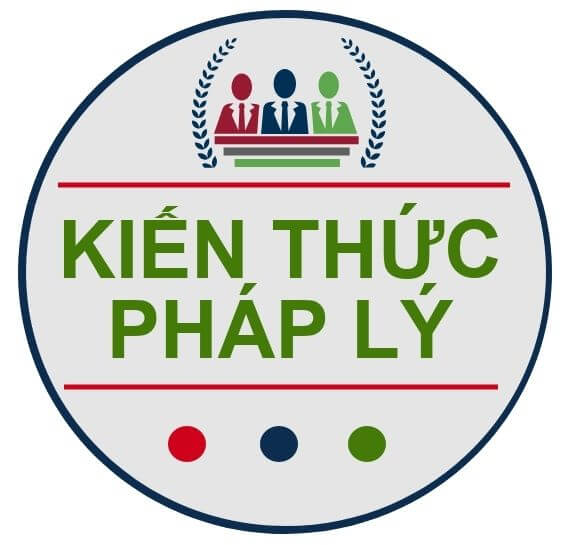The transfer of real estate projects together with the land use right has become a common practice in the real estate market of Vietnam. However, as the transfer of those projects is governed by a wide range of legislations (the 2014 Law on Investment, the 2013 Law on Land and the 2014 Law on Real Estate Trading Business), there seems hardly a unified understanding on the set of legal procedures to carry out the transfer of real estate project.

The Vietnamese version of this article is available HERE.
This article shall concentrate on analyzing the regulations on the procedures for conducting the transfer of real estate projects together with the land use right (hereinafter referred to as the “Project”) without referring to the conditions for such transactions. Henceforth, the term “Project” employed herein shall only refer to the projects which have fully met all the conditions required for the transfer prescribed by the law on land, the law on investment, and the law on real estate trading business. Further to the foregoing, the transferor of the project being the subject of this article is foreign-owned company (FOC) only since the procedures applicable for the FOC are considered most complicated.
Step 1: To submit the application dossier for the transfer of the Project
Competent authority: Provincial-level People’s Committee or its authorized body[1].
Regulatory dossiers: Article 12.2 of the 2014 Law on Real Estate Trading Business (the “LRET”)
Regulatory timeline[2]:
- 30 days from the submission date of proper dossier (if falling under the approval authority of provincial-level People’s Committee)
- 45 days from the submission date of proper dossier (if falling under the approval authority of the Prime Minister)
Result: Approval on the transfer of the Project issued by the provincial-level People’s Committee or the Prime Minister (the “Transfer Approval”)
Step 2 includes the following assignments
(2.1) To enter into the agreement on the transfer of the Project;
(2.2) To amend the Investment Registration Certificate (IRC) or In-principle Investment Approval (IIA);
(2.3) To hand over the Project and legal documents of the Project to the transferee; and
(2.4) To submit the dossiers for returning the land to the competent authority.
Regulatory timeline: 30 days as of the issuance date of the Transfer Approval
The workload to be completed in Step 2 is substantial. Therefore, the concerned parties must be well-prepared and co-ordinate with each other to complete all the required assignments within 30 days as mentioned above. To note that the amendment to the IRC or the IIA (2.3) is not statutorily required. Nevertheless, since the hand-over of legal documents of the Project must be completed within the aforesaid timeframe, completing the amendment to the IRC or the IIA so that the amended IRC or IIA can be handed-over together with other legal documents at the handover date should be best for the interests of both parties. That being said, as the burden of time lies significantly upon the transferor, the parties may agree to only submit the application document for amendment within the above timeline but to hand-over those amended certificate / approval afterwards. In this case, the amended IRC / IIA shall be left for Step 3.
(2.1) To enter into the agreement on the transfer of the Project (“Transfer Agreement”)
In practice, the main contents of the Transfer Agreement are usually agreed by the parties before the issuance of the Transfer Approval because it is hardly possible that the parties are able to execute the Transfer Agreement within 30 days had it not been discussed beforehand. The Transfer Agreement should be structured based on the set of conditional precedents in correlation with the specific payment installments.
Before signing the Transfer Agreement, it is a common practice for the concerned parties to enter into an in-principle agreement / memorandum of understanding and deposit agreement (MOU/IPA) / master agreement (hereinafter referred to as the “IPA”). Accordingly, the IPA sets out the framework of assignments to be carried out and respective payments to be made for the contemplated transaction. To ensure the obligations being fulfilled, the transferee commonly deposits 10% – 20% of the value of the Transfer Agreement to the transferor. In several complicated transactions, the IPA is structured as a comprehensive master agreement whereby it provides a detailed framework of each phase of the transaction. The Transfer Agreement in those cases plays the role of a secondary agreement serving only for the procedural requirement. Taking into account the above flow of transactions, the execution of the Transfer Agreement shall immediately (without any delay) result in the substantial payment being made by the transferee to the transferor (50% – 70% of the value of the Transfer Agreement).
(2.2) To amend the IRC or IIA
Competent authorities: Department of Planning and Investment or Industrial Zone Authority (if the project is located in the industrial zone) or Economic Zone Authority (if the project is located in the economic zone)
Regulatory timeline:
- 10 working days from the submission date of proper dossiers if the Project does not fall under the in-principal approval authority of the provincial-level People’s Committee
- 16 working days and 20 calendar days from the submission date of proper dossiers if the Project falls under the in-principal approval authority of the provincial-level People’s Committee
- 32 working days and 25 calendar days from the submission date of proper dossiers if the Project falls under the in-principal approval authority of the Prime Minister
Regulatory dossiers: Article 37.2 of Decree 118/2015/ND-CP
In fact, as the Transfer Approval has already been issued, the amended IRC/IIA may likely be issued without any disruptions.
Results: the amended IRC and/or IIA.
(2.3) To hand over the Project and legal documents of the Project to the transferee
The hand-over of the Project, as well as legal documents of the Project, are the final steps in the project transfer transaction. On the hand-over date, the concerned parties shall sign the handover minutes. For those documents which have not yet been handed over on the handover date, the handover minutes must record the same precisely.
(2.4) To submit the dossiers for returning the land to the competent authority
Despite being separated into a sub-step 2.4, this step should be conducted prior to or on the handover date so as to ensure that the primary obligations of the transferor have been duly completed and the transferee may be able to release all or most of the transfer price (90% – 100%). Upon the submission of the dossier for returning the land, the competent authority shall be liable to issue the land allocation / land lease decision and the land use right certificate (LURC) recording the transferee as the land user.
This procedure is arguable as it is inconsistent with the current law on land. While article 83.2 of Decree 43/2014/ND-CP classifies the procedure for registration of change on land subject to the land use basis[3] and the origin of the land use levy (whether it is originated from the State’s budget or not), article 51 of the LRET forces the FOC to follow one single procedure (without taking into account the land use basis and the origin of the land use payment in accordance with the law on land).
Since the LRET is the specialized law governing such kind of transaction, the provisions of the LRET shall prevail in principle. Accordingly, the transferor shall carry out the procedure for voluntarily returning the land prescribed by (i) article 65.1(c) of the 2014 Law on Land; (ii) article 65 of Decree 43/2014/ND-CP and (iii) article 13.3 of Circular 30/2014/TT-BTNMT rather than follow the procedure of transferring the land use right under article 83.2(a) or selling the assets attached to land under article 83.2(b) of Decree 43/2014/ND-CP.
It is worth noting that the analysis above is solely personal understanding from the author towards the current regulations. Since there are inconsistencies between the law on land and law on real estate trading business, there is no doubt that the local authority may apply the regulation differently on a case-by-case basis. Given such, the author opines that it is imperative that the concerned parties seek opinion / guidelines from the local authority beforehand.
[1] Article 51 of the LRET.
[2] Article 51.2 of the LRET; Article 13.2 and 12.3 of Decree 76/2015/ND-CP.
[3] Land allocation with land use levy, land allocation without land use levy, land lease with annual rental payment, land lease with one-off rental payment.
- CHUẨN MỰC “CẨN TRỌNG” TRONG QUẢN TRỊ DOANH NGHIỆP: NHẬN DIỆN, ĐÁNH GIÁ VÀ GIẢI PHÁP THỰC TIỄN - Tháng 8 16, 2025
- TUÂN THỦ PHÁP LUẬT LAO ĐỘNG CHO DOANH NGHIỆP – CÁC LOẠI BÁO CÁO ĐỊNH KỲ (PHẦN 1) - Tháng 4 9, 2025
- LỰA CHỌN CƠ QUAN GIẢI QUYẾT TRANH CHẤP TRONG GIAO DỊCH MUA BÁN CÔNG TY CÓ LIÊN QUAN ĐẾN BẤT ĐỘNG SẢN - Tháng 1 12, 2025








One Comment